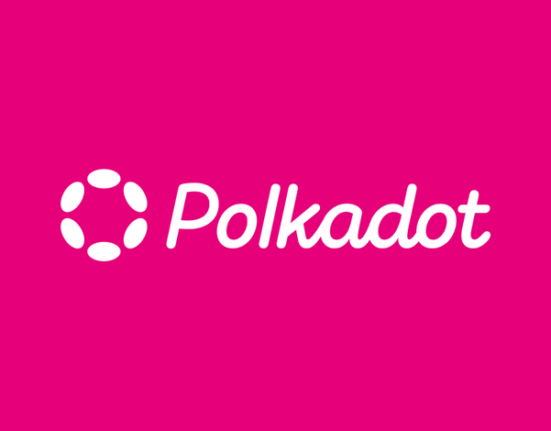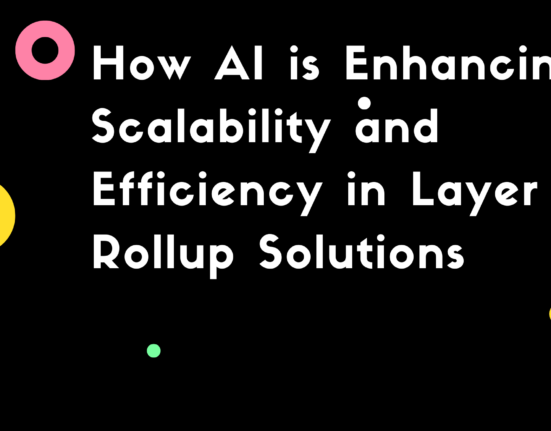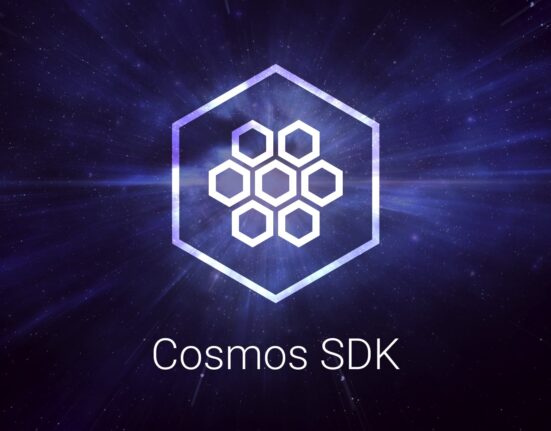In the world of digital money, blockchain is like the superhero ensuring everything goes smoothly. It keeps track of transactions securely and in real-time. But as more people join in, things get a bit crowded. That’s where Blockchain Rollups come in – they’re like superheroes fixing the traffic issue without messing up the safety and fairness. This article, “Types of Blockchain Rollups,” is your guide to these cool solutions that make blockchain work better. From the super-confident Optimistic Rollups to the mysterious ZK-Rollups, we’ll walk you through how they work. Get ready for a ride into one of the coolest things happening in the digital money world!
Contents
Types of Blockchain Rollups:
Blockchain rollups are layer 2 scaling solutions that allow transactions to be processed off-chain and data to be posted on-chain in a compressed form. This helps reduce congestion on layer 1 chains like Ethereum and improves transaction speeds and reduces fees. There are two main types of rollups – zero-knowledge (ZK) rollups and optimistic rollups.
History of Rollups:
The concept of rollups was first proposed in 2018 by researchers Barry Whitehat and Vitalik Buterin as a layer 2 scaling approach for Ethereum. The early designs were basic unidirectional channels that would post transaction data to layer 1.
In 2019, the AZTEC protocol implemented the first ZK rollup on Ethereum using zkSNARKs for privacy. Loopring also launched its ZK rollup focused on payments. In 2020, Starkware launched its ZK rollup implementation with the Cairo programming language.
On the optimistic rollup side, Optimism went live on Ethereum in early 2021. Other projects like Arbitrum and Fuel Labs also launched in 2021.
Over the last 2 years, rollups have seen rapid adoption especially as gas fees rose on Ethereum. Leading decentralized exchanges like Uniswap and dYdX have deployed on both optimistic and ZK rollups.
| Year | Key Events |
|---|---|
| 2018 | Concept proposed by Buterin and Whitehat |
| 2019 | AZTEC builds first ZK rollup, Loopring launches ZK payments |
| 2020 | Starkware ZK rollup goes live |
| 2021 | Optimism, Arbitrum, Fuel Labs launch optimistic rollups |
| 2022 | Rapid adoption by DEXs like Uniswap, dYdX |
Zero-Knowledge (ZK) Rollups:
ZK rollups bundle hundreds of transactions off-chain and generate a cryptographic proof known as a SNARK (succinct non-interactive argument of knowledge). This proof validates the legitimacy of all the transactions in the rollup bundle without revealing any information about the transactions themselves. Only this compressed proof data is posted to layer 1.
Some key properties of ZK rollups:
- Provides complete privacy as the actual data of transactions is not revealed on-chain, only validity is proven. This is done using advanced cryptographic techniques like zkSNARKs.
- Supports complex computations like smart contracts. The computations happen off-chain.
- Transactions are instantly finalized off-chain before being batched and posted to layer 1. This provides faster settlement times.
- ZK rollups are inherently secure as they rely on validity proofs. Invalid state transitions cannot be posted to layer 1.
- Examples of live ZK rollup implementations include Loopring and Starkware. Both support processing hundreds of transactions per second.
- ZK rollups are still early in development. Challenges include high gas costs for proving validity on-chain and the need for trust assumptions about the operator.
| Property | Description |
|---|---|
| Privacy | Hides all transaction data, only proving validity on-chain |
| Computation | Supports complex smart contracts |
| Speed | Instant transaction finality |
| Security | Relies on cryptographic validity proofs |
| Examples | Loopring, Starkware |
| Challenges | High proof gas costs, trust assumptions |
Optimistic Rollups:
Optimistic rollups execute transactions on layer 2 and only post transaction data to layer 1. The transaction data can be challenged via fraud proofs if anyone spots any illegitimate activity.
Some key properties:
- All transaction data is posted to layer 1, so it is transparent. Does not have privacy like ZK rollups.
- Only supports simple token transfers and not complex computations.
- Transactions are finalized after a challenge period of around 1 week. This provides slower settlement compared to ZK rollups.
- Optimistic rollups are secure through economic incentives for fraud proofs. Invalid transactions can get challenged.
- Examples like Arbitrum and Optimism process over 2000 TPS.
- Current issues include liquidity fragmentation and high costs of fraud proofs.
| Property | Description |
|---|---|
| Transparency | All transaction data is public on-chain |
| Computation | Only simple transfers, no complex contracts |
| Speed | 1 week transaction finality |
| Security | Relies on fraud proofs |
| Examples | Arbitrum, Optimism |
| Challenges | Liquidity fragmentation, high fraud proof costs |
Hybrid Rollups:
There are also hybrid rollups which combine properties of both ZK and optimistic rollups. They bundle transactions off-chain and generate a ZK proof for validity. They also have a separate fraud proof mechanism as an additional security layer.
An example is the Coda protocol rollups. Hybrid rollups aim to provide both security from fraud proofs and privacy from ZK proofs.
| Type | Description |
|---|---|
| ZK Rollups | Bundles txs off-chain, posts compressed proof on-chain. Privacy preserving. |
| Optimistic Rollups | Posts all tx data on-chain. Has fraud proof mechanism. |
| Hybrid Rollups | Combines ZK proofs and fraud proofs. Eg. Coda protocol. |
Blockchain Rollups Comparison:
| Property | ZK Rollups | Optimistic Rollups | Hybrid Rollups |
|---|---|---|---|
| Privacy | High | Low | High |
| Computation | Complex | Simple | Complex |
| Speed | High | Low | Medium |
| Security | Validity proofs | Fraud proofs | Both |
| Examples | Loopring, Starkware | Arbitrum, Optimism | Coda |
Rollup Adoption:
Rollups are seeing rapid adoption, especially among decentralized exchanges and applications. Some examples:
- Uniswap deployed on both Optimistic and Arbitrum rollups, providing scaling solutions for trading.
- dYdX switched to Starkware’s ZK rollup allowing fast perpetual swap trading.
- Immutable X uses Starkware to offer scaling for NFT trading on apps like Opensea.
- AZTEC is developing ZK rollup products for private transactions.
- Reddit is using Arbitrum rollups to scale its Community Points system.
| Application | Rollup Used |
|---|---|
| Trading (Uniswap, dYdX) | Optimistic, ZK |
| NFTs (Immutable X) | ZK |
| Privacy (AZTEC) | ZK |
| Social Tokens (Reddit) | Optimistic |
BlockchainRollup Challenges:
While rollups provide significant improvements in scalability compared to layer 1 chains, they face some challenges:
- Need for liquidity and infrastructure on layer 2.
- High costs of fraud proofs and validity proofs.
- Risk of data availability issues if operators go down.
- Lack of composability between different rollup chains.
These are active areas of research and development. Solutions like unified liquidity across chains, decentralized rollup operators, and cheaper validity proofs will help address these challenges.
The Future of Blockchain Rollups
Rollups are expected to play a major role in scaling Ethereum and other layer 1 blockchains. Here are some possible future trends:
- Proof costs will reduce with techniques like recursive ZK proofs and economic incentives for fraud proofs.
- Decentralized rollup operation will enhance security and prevent data availability issues.
- Cross-rollup composability will allow assets to move freely across different layer 2 chains.
- Rollup chains may interconnect similar to how sidechains connect to Bitcoin.
- Rollup adoption will continue growing, processing millions of TPS.
- Privacy-focused applications will use ZK and hybrid rollups. Public apps can use optimistic rollups.
- Rollups will enable new Web3 use cases like metaverse worlds and decentralized social networks.
Rollups are one of the most promising scalability innovations in blockchain currently. With continuous research and development, they are poised to unlock the next generation of fast, low-cost and secure decentralized applications.
Conclusion:
In summary, the two main types of blockchain rollups are ZK rollups and optimistic rollups. The former offers privacy while the latter offers transparency. Hybrid rollups aim to provide the best of both worlds. As layer 2 solutions, rollups help scale blockchains like Ethereum by reducing congestion and fees on layer 1. With their rapid innovations, rollups are poised to enable blockchain technology to support global-scale decentralized applications. Ongoing work is required to tackle challenges around liquidity, composability, proof costs, and data availability. The future looks bright for rollup technology playing a pivotal role in scaling blockchains to millions of users.

Subhadra, a seasoned research analyst, specializes in distilling complex developments in blockchain and AI into insightful narratives. Her expertise lies in providing a nuanced understanding of emerging technologies, making her a trusted source for in-depth and up-to-date analysis at the intersection of blockchain and AI.







